
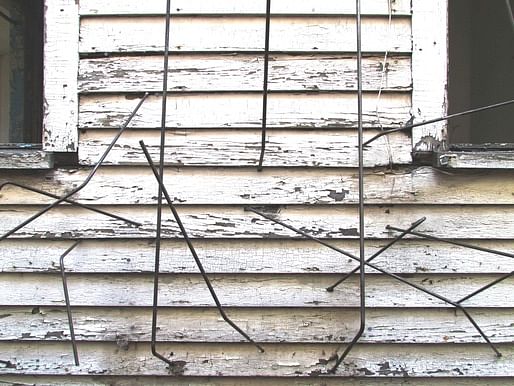
In part one of this three part series on my thesis research (which concluded last May) I gave an overview of the ambitions of the project and some of the ideas and outcomes that emerged along the way.
I will use this post to talk about some of the major results of those ideas; in particular, a full-scale installation in Detroit entitled Installation 7721. I generally hate giving names to my research projects, a conclusion I came too after seeing multiple studio projects from my peers get crushed at final reviews based solely on the perceived relevance of their titles. Why talk about the ideas behind the work when we can just spend 35 minutes talking about what the title means? That happened way too much at school. Thus I kept it simple for the naming convention of my final installation. Installation 7721 is named for the address of the houses where the work was located...keeping it simple.
Anyways, while the previous post showcased some of the drawings and 2D representations that came out of my thesis research, the goal at the end of the day was always to arrive at a full-scale installation. This ambition actually served as the underlining motivation for the entire project. I went into my thesis with one simple goal in mind; learn the logistics that went into developing full-scale work, in this case an installation. While I believe that some interesting ideas eventually came out of my research, going through the installation process was the key educational activity of my entire thesis journey.
Luckily my thesis advisor, Catie Newell of Alibi Studio, is a rockstar in this area and served up some key teaching and motivational moments throughout the process. Catie's "just do it!" pep talks were crucial in moments of trepidation (like the time I was hesitant to pull the trigger on a 1000ft order of steel rod)....JUST DO IT! With Catie’s help, Installation 7721 was both a success in teaching me how to approach full-scale work, and also in terms of demonstrating my overall thesis ideas and research.
As described in my previous post, the thesis work was intended to explore vanishing spaces within the post-industrial city. Particular to this work is the spatial charge created through the dense distribution of housing units, a condition which is continually in danger of disappearing as the city’s density is lost due to demolition and destruction. While drawings were used to explore the formal qualities and implications of these spaces, the installation begins to activate the work within the larger context of the city. The installation was meant as a physical manifestation of the spatial charge given to the space through the adjacent houses which make the space possible. The secondary goal of the installation is to highlight this space and bring attention to a condition which is fading away within the city of Detroit. Consisting of over 1200ft of bent steel rod, the installation was designed and fabricated in Ann Arbor and then transported to Detroit and installed over a (2) day period. Sounds pretty good on paper, right? Unfortunately, things did not go “according to plan” and in addition to getting my Master’s Degree, I ended up getting an Associate’s degree from the school of Hard Knocks.
Here is what happened:
Installation 7721
Once I knew what I wanted to do and where I wanted to do it, I spent several days driving around Detroit scouting out locations; finally settling on a site adjacent to the now abandoned Packard Automotive Plant. The site was a standard neighborhood block for the area, however only two houses on the North-West corner remained. The rest of the block was covered with overgrowth and debris. The (2) remaining houses had been abandoned for several years after an apparent fire destroyed most of the upper floors of both structures.
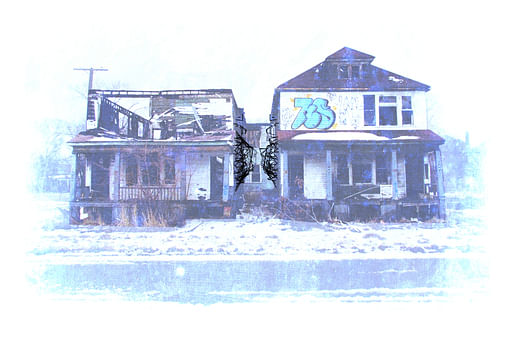
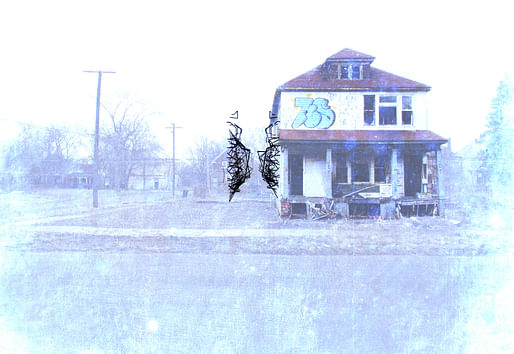

Once I had my site, I next spent about a week developing a digital model of the site and its remaining structures. I used this model in the designing of how each of the hundreds of steel rod modules would interact with both the houses and each other. The modules were separated into (3) subsets, each with a specific task within the larger scheme of the installation. Subset_1 was responsible for created the spatial presence of the installation, emerging out of the adjacent facades of the existing houses. Subset_2 built off of the first by tracing the characteristics of the existing facades and extruding them into the space created by Subset_1. This second subset is equipped with battery powered LED lights in order to “remember” the existing architecture as it fades away. The role of Subset_3 is simple; create noise and distortions in order to camouflage the intentions of the first (2) subsets.

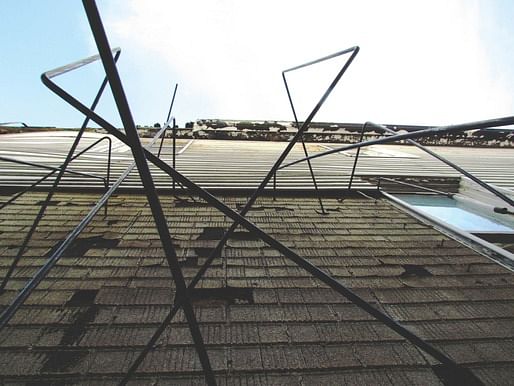
After figured out how the (3) subsets would interact with both themselves and the existing facades, it was time to jump head-first into production and fabrication. This involved countless trips to pick up steel rod at a local metal shop and then cutting and bending each piece to specific sizes and angles in Taubman College’s FABlab. As my classmates were up in the studio (aka thesis land) putting together final presentation boards filled with renderings and diagrams, I was downstairs bending away… day after day for countless hours at a time.

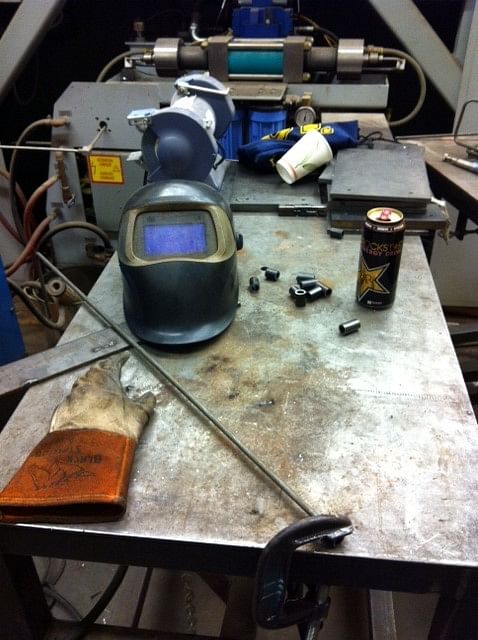
With all the pieces cut and bent, I was now ready for my install in Detroit. I had rented out the school’s pickup truck and was in the process of loading up the hundreds of steel rod bundles late one night I got a tilting email from Catie in which she informed me that she had just driven by my site, only to find that both houses had been demolished. In their place…nothing. Now with hundreds of steel rods bent to specific measurements based on a site that no longer existed, I’M FREAKING OUTMAN!
Instead of installing my hard work in Detroit, I spent that following day again driving around the city searching for a new sight, in addition to having hourly panic attacks. With light fading and my gas tank running on fumes, I finally found a suitable replacement site, grabbed some quick measurements and headed back to the studio to reconfigure everything to suit the new conditions. Each of the (3) subsets was specifically designed for the original site and its houses, so it wasn’t easy to transfer the work to a new set of circumstances. Finally, after several sleepless nights and countless coffees, I managed to rework the design to fit the new site.
With the truck loaded up again, I headed to Detroit and began a (2) day installation marathon. I was very fortunate to have (3) awesome friends sacrifice their Saturday in order to help me out, and with their help we were able to finish everything over the course of a single weekend.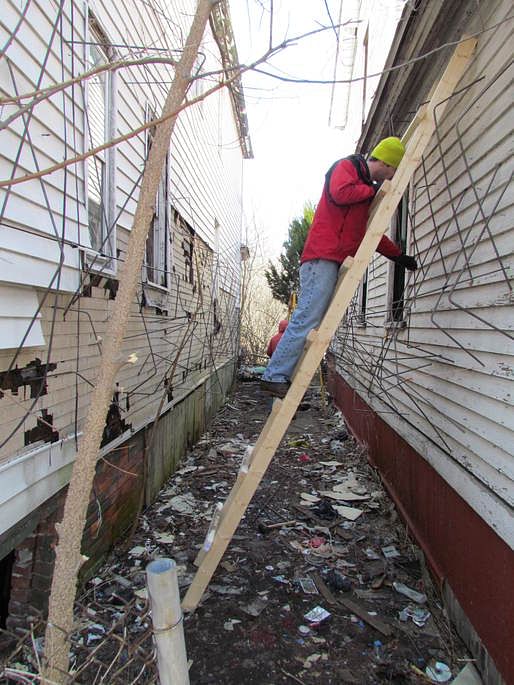
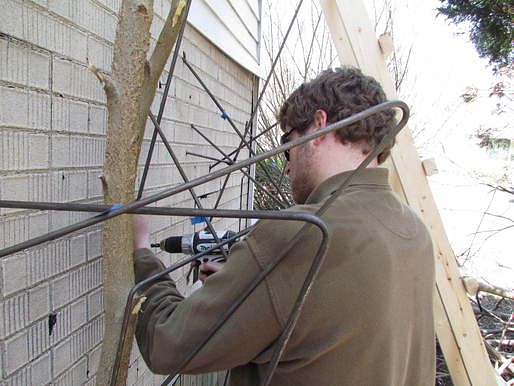
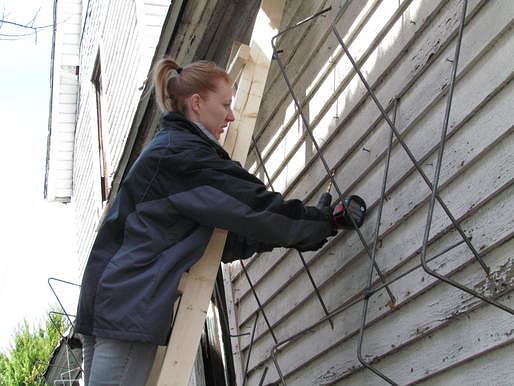
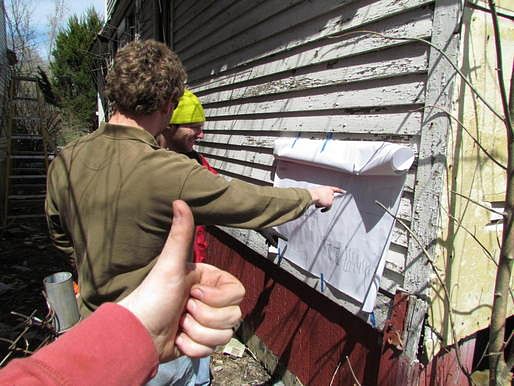
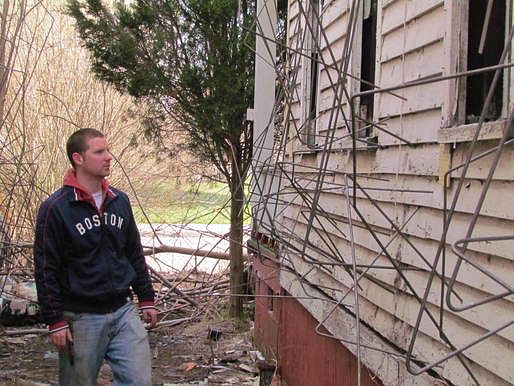
I didn’t want to take any chances so as soon as we finished I made sure to meticulously photograph everything. However, since the installation had a lighting component to it, I had to return the next day at dusk in order to capture the lights properly. It was at this time that I encountered the second devastating blow to my thesis morale. Upon my return, not more than 20 hours after finishing the install, I found that every single component had been ripped out of the facades and stolen. Over 1200 feet of steel rod had disappeared over night, stolen by the city and sold for about $7 in scrap metal. 10 months of work had evaporated over the course of a single night. A brutal reality to doing work in a post-industrial city, my only source of comfort was knowing that everything that happened had served as a type of “proof of concept” for my work and its underlining ideas. The structures and the spatial charges they created had indeed disappeared, and this work attempts to remember and shed light on them.

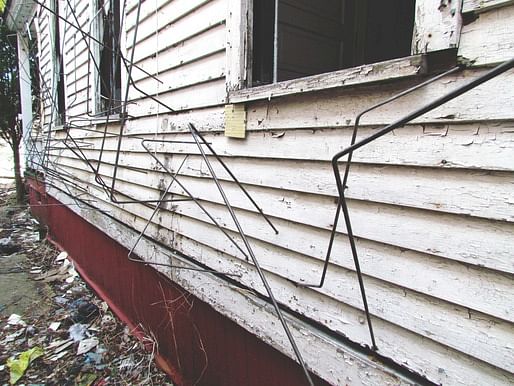
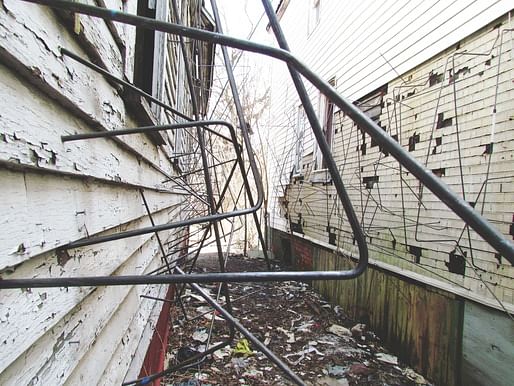
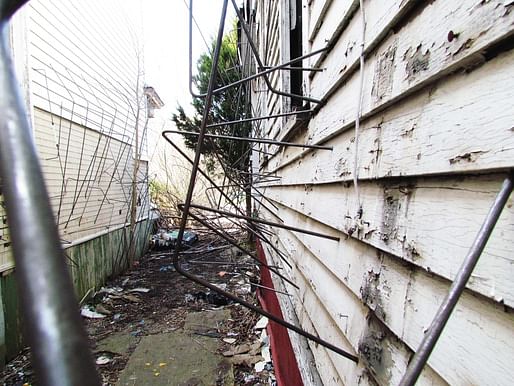
Special Thanks to:
Whit Self
Clay Montgomery
Brittany Szczepanik
All for now, part three coming soon…
I am a graduate student and an entrepreneur at the University of Michigan Taubman College where my studies are focused on leveraging design ideas across multiple scales and platforms. Meeting at the intersection between design, tectonics and fabrication, I am continually exploring how a design idea can navigate complex material and production systems and evolve into fully realized architectural artifacts.
2 Comments
What a coincidence that you just posted this and I just read this today on Vice: http://www.vice.com/read/scrap-or-die-0000117-v20n10?Contentpage=-1
Super interesting project, Harry, and very relevant to what's going on in these cities. Great work!
wow! very interesting!
Block this user
Are you sure you want to block this user and hide all related comments throughout the site?
Archinect
This is your first comment on Archinect. Your comment will be visible once approved.